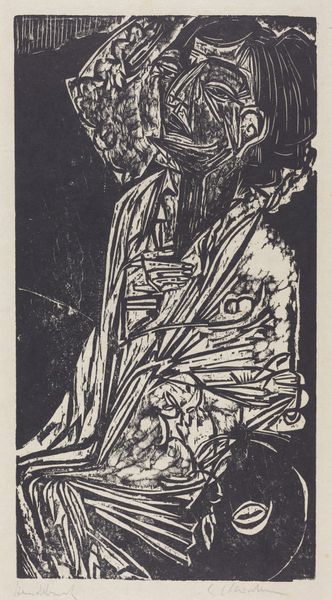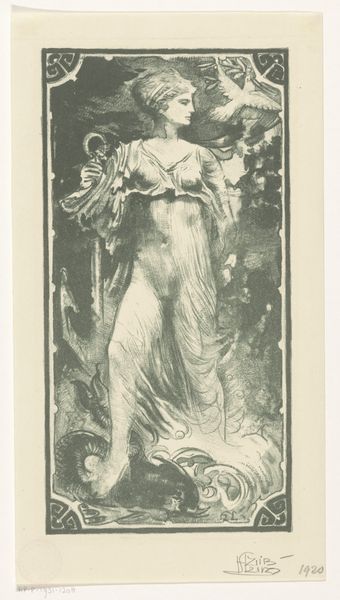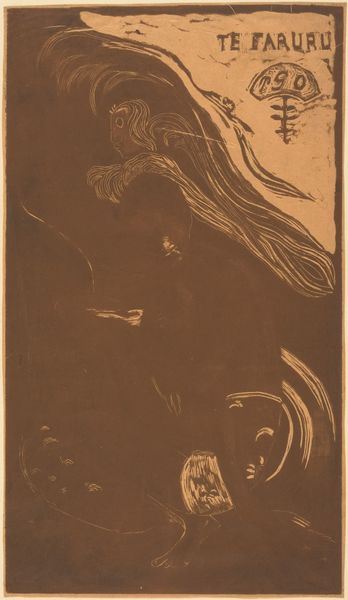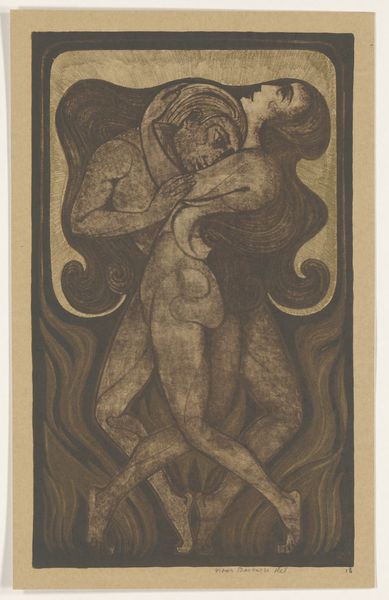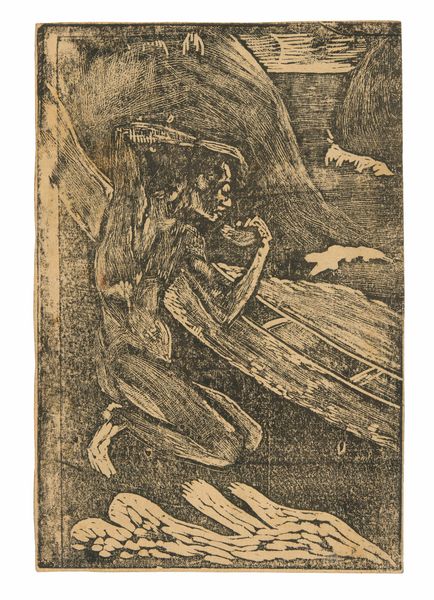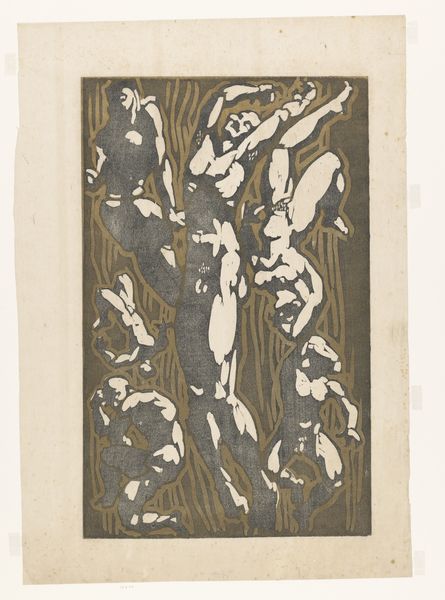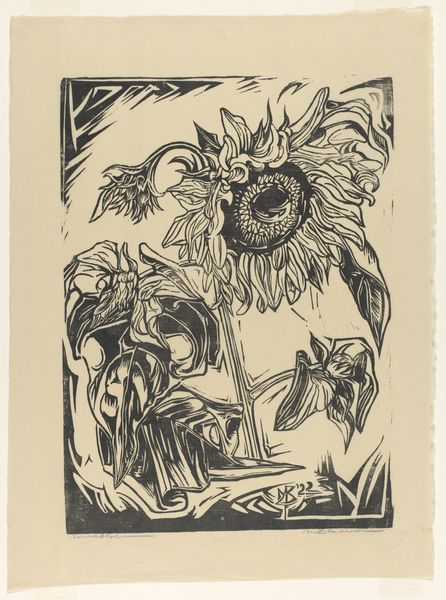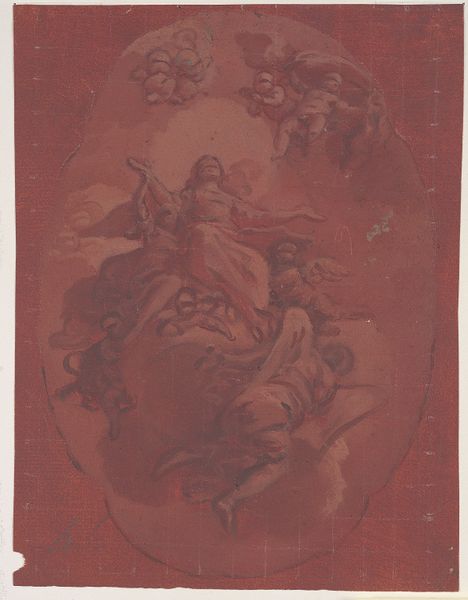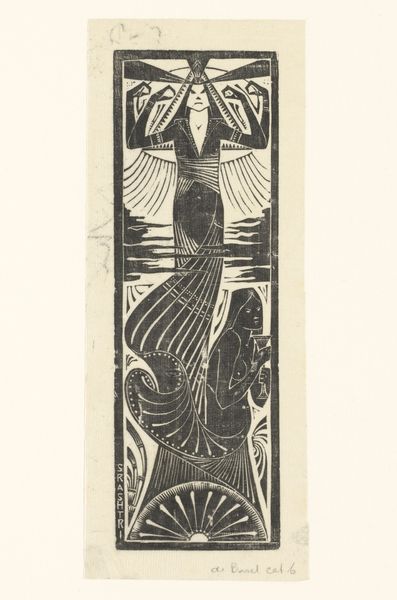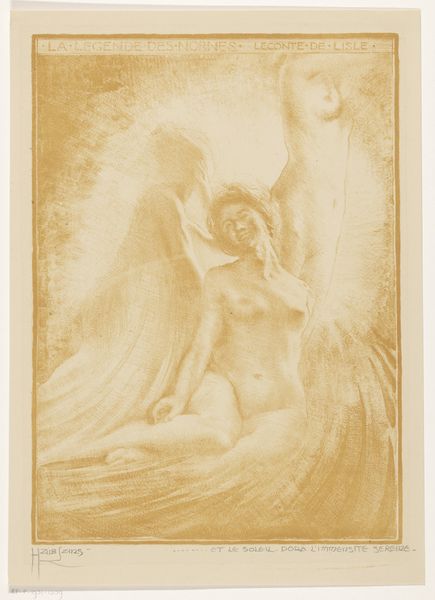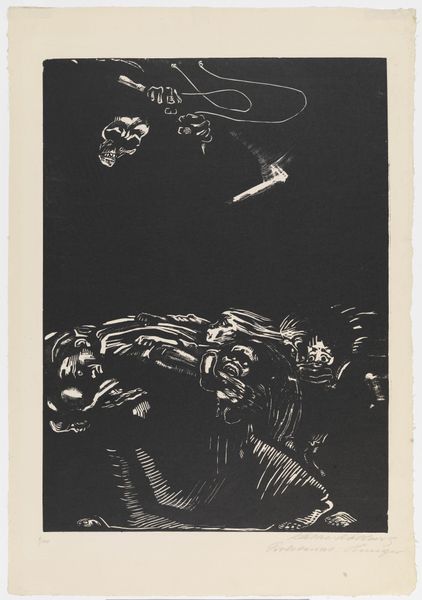
#
toned paper
#
ink painting
#
handmade artwork painting
#
tile art
#
fluid art
#
acrylic on canvas
#
linocut print
#
coffee painting
#
watercolour illustration
#
watercolor
Dimensions: height 860 mm, width 574 mm
Copyright: Rijks Museum: Open Domain
Editor: This is "Flying Warrior Protecting the Downtrodden from an Eagle," created around 1917 by Charles Ricketts. It seems to be made with ink on toned paper. I find it fascinating how this mythological figure seems both protective and violent. What stands out to you most when you look at this work? Curator: Immediately, the overriding visual symbolism of deliverance strikes me. Look at how Ricketts has staged a drama where the traditional motifs of protection—the warrior, the sword, even the heraldic eagle—are rendered ambiguous. Is this truly salvation, or another form of imposition? Editor: Ambiguous how? The warrior seems intent on fighting off the eagle... Curator: Consider the eagle, traditionally a symbol of power, often imperial power. But here, it seems a natural predator. Are the “downtrodden” truly free under the warrior's protection, or merely exchanged from one form of dominance to another? Also, examine their passivity, how they don’t seem to participate in their own rescue. Editor: I hadn't considered that angle. So you’re saying the cultural symbolism could be interpreted as a cycle of power? Curator: Precisely! The figures might be rescued from immediate danger, yet remain under a new dominion, highlighting a potentially endless repetition. The sword the figure wields might suggest resolution but might indicate more oppression. Is it possible that Ricketts is commenting on the ever-shifting yet unchanging dynamics of power and the illusion of true liberation? Editor: It's quite thought-provoking how the artwork encourages viewers to contemplate beyond simple rescue narratives and instead analyze the complexities of power dynamics and liberation. Curator: Indeed! The power of art resides in its ability to mirror these layered realities, enabling ongoing dialogues with the symbolic weight carried across history.
Comments
No comments
Be the first to comment and join the conversation on the ultimate creative platform.
